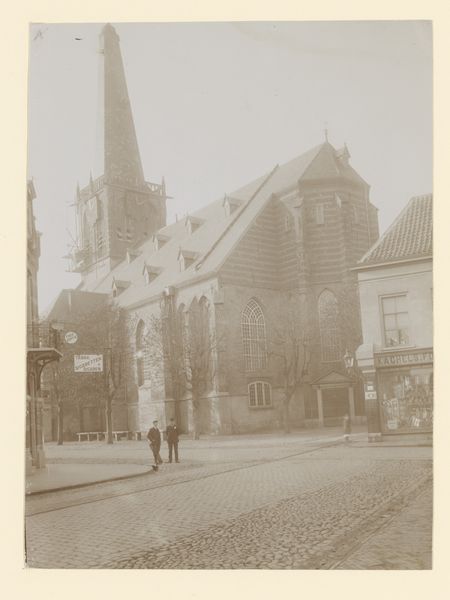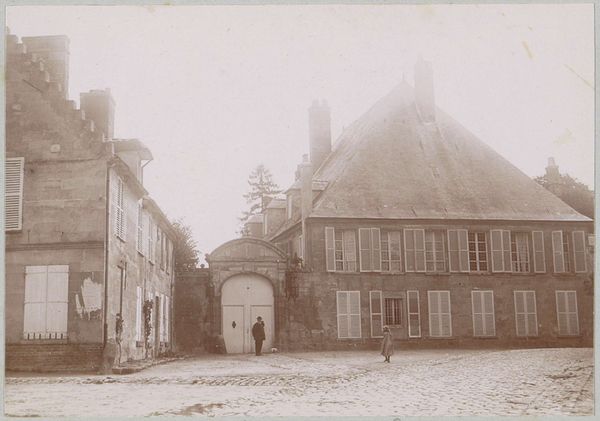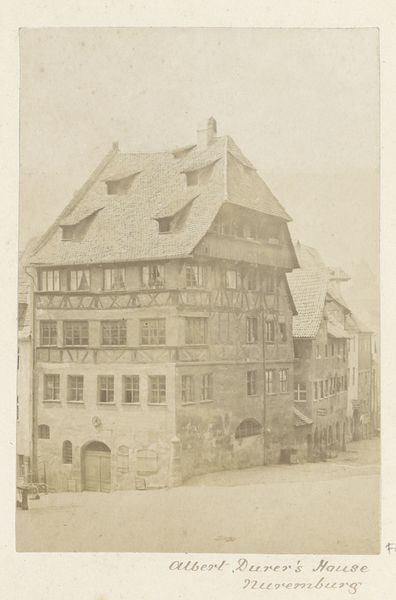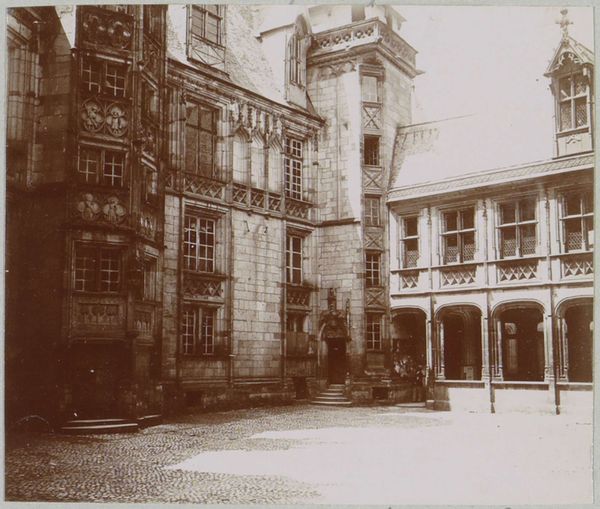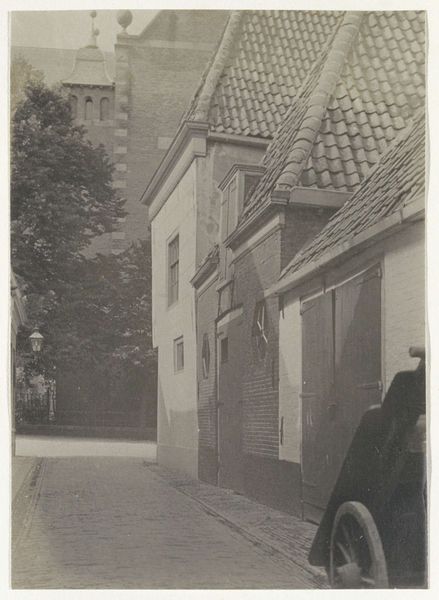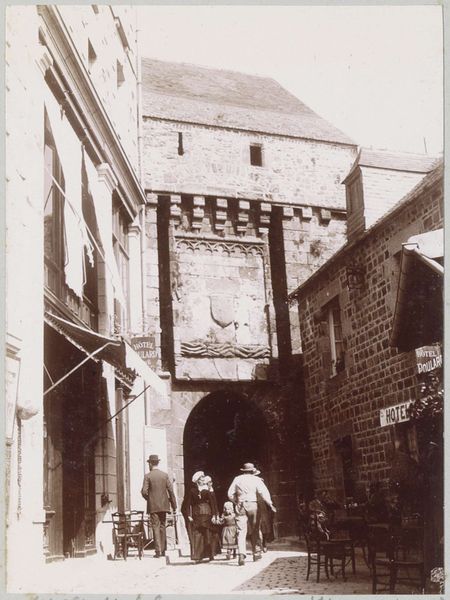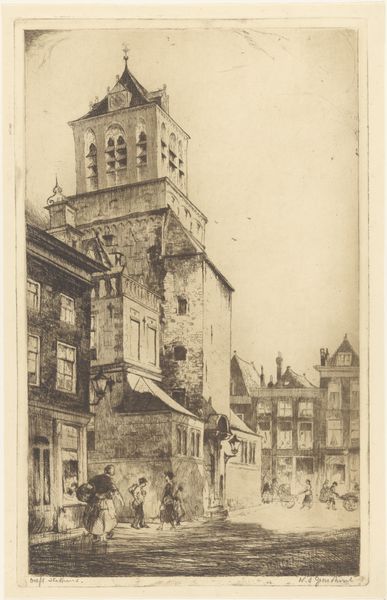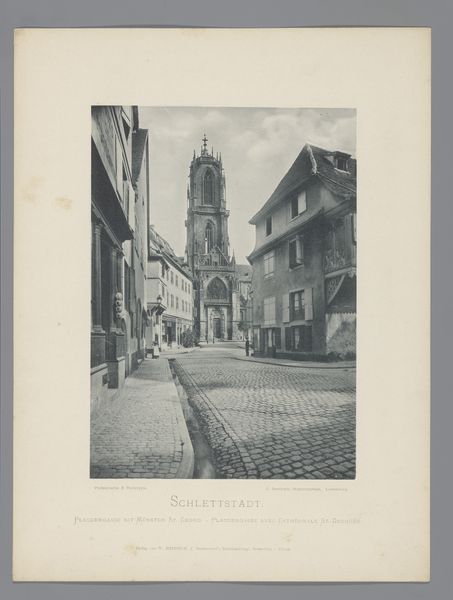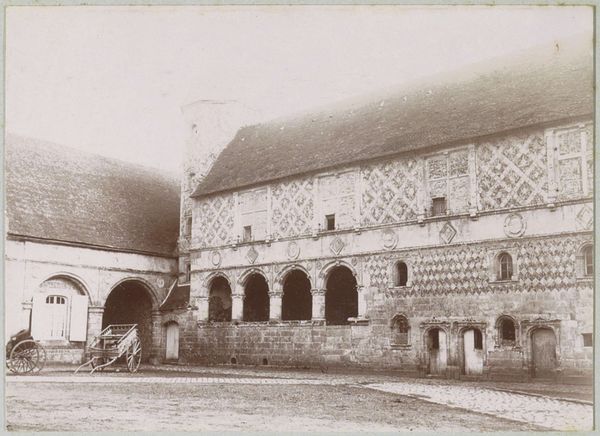
photography
#
landscape
#
german-expressionism
#
street-photography
#
photography
#
monochrome photography
#
cityscape
#
monochrome
Dimensions: height 81 mm, width 107 mm
Copyright: Rijks Museum: Open Domain
Curator: What strikes me first is how the monochrome tones lend a palpable sense of history. This is "Gezicht op de Klingentor in Rothenburg ob der Tauber", a photograph taken around 1900. Editor: Absolutely. There's a dreamlike quality to it. The architecture is rendered in such soft focus that it feels like peering into a memory, maybe even one collectively held. The photograph becomes an echo of a bygone era. Curator: Precisely. The Klingentor, a tower gate, is presented as a symbol of the city itself. Given its historical importance in Rothenburg, do you see visual elements here reflecting the cultural mood of the time? Editor: The tower looming through the mist does invoke certain feelings, right? There’s something vaguely unsettling about the composition. While seemingly documenting this historic cityscape, it might also unconsciously allude to societal shifts underway in Germany at the time. Curator: An interesting perspective. The narrow street leads the eye directly to it, creating an undeniable focal point, and indeed the photograph captures the essence of this location, so significant as a defensive structure of the old town, which it guards. Editor: But it is almost being devoured by fog, though, isn’t it? Look at the framing – how the buildings seem to close in towards the Klingentor, emphasizing a certain kind of institutional power, especially with that restricted field of view. Is the photograph quietly making some argument about historical burden or restriction? I wonder… Curator: Your analysis allows seeing a symbol not only as representation but as active agent, shaping perception and meaning, as an element which speaks about societal changes. It offers new avenues for understanding collective experiences imbedded in this visual representation of memory. Editor: Exactly. A photo isn't a mere snapshot, it is an invitation for us to reconsider the stories we inherit and perpetuate. Thanks to visual literacy, works like this reveal how power structures embed themselves into the built environment, quietly influencing our thoughts and behavior. Curator: I’m glad to delve with you into this German cityscape and its latent echoes in visual culture and collective memory. Editor: Indeed, I am walking away looking differently at photographs, particularly as visual instruments that preserve and scrutinize inherited histories.
Comments
No comments
Be the first to comment and join the conversation on the ultimate creative platform.



